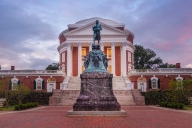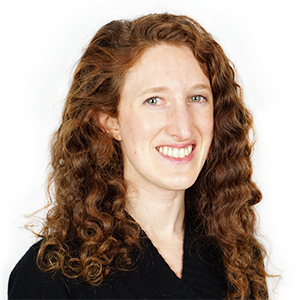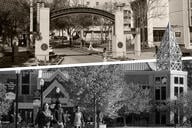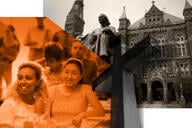You have /5 articles left.
Sign up for a free account or log in.
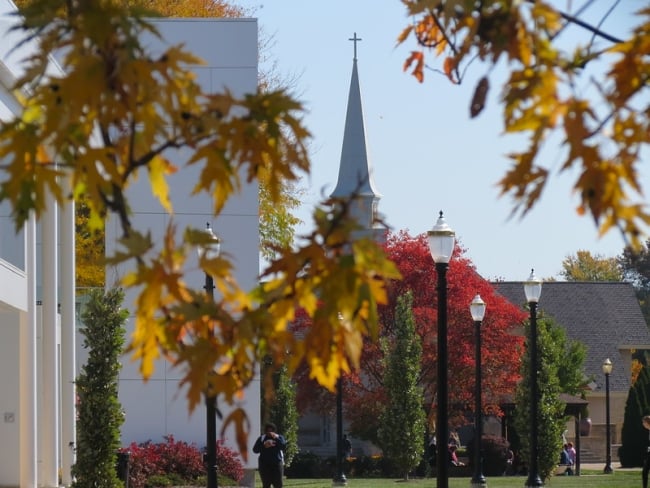
Walsh University is one of many Catholic higher ed institutions that has had to adjust as sponsoring orders grow smaller and withdraw more from campus life.
Walsh University
Governance structures at Catholic colleges and universities are rapidly changing as their sponsoring orders of nuns and priests shrink in size and relinquish some of their historic leadership responsibilities. A new report by the Association of Catholic Colleges and Universities and the Association of Governing Boards of Universities and Colleges details the varied strategies university leaders are using to retain their missions and a sense of religious identity amid the shift.
Ninety percent of Catholic higher ed institutions in the U.S. were founded by religious orders whose members often served as presidents, trustees and faculty members, the report noted. But the numbers of sisters, brothers and priests has fallen precipitously across the country as religious orders age and struggle to attract new members, according to the report. About 70 percent of the roughly 54,000 religious order members were age 70 or older in 2022, compared to just 7 percent almost 25 years ago.
That demographic change has serious implications for the governance structures of Catholic colleges and universities, which rely on the members of the religious orders as formal ties to the Catholic Church.
“It’s a massive cultural shift,” said the Reverend James Heft, a scholar in residence at the University of Dayton, a Catholic institution in Ohio. He also wrote a book called The Future of Catholic Education and founded the Institute for Advanced Catholic Studies at the University of Southern California.
“We’re in the process of sorting that out,” he said, of the structural changes. “And some of us are going to do a better job at it than others.”
The report, based on a survey of 158 Catholic colleges and universities, follows up on a similar study on sponsorship relationships conducted 23 years ago. A third of survey respondents reported that their governance arrangements changed in the last five years because sponsors were no longer able to fulfill their traditional duties. Another 15 percent said sponsors told them to expect future governance changes for the same reason.
The Reverend Dennis Holtschneider, president of the Association of Catholic Colleges and Universities and an author of the report, said religious orders were already starting to shrink two decades ago. They responded by taking on governance powers, such as serving on boards of trustees and requiring sponsor approval on certain decisions, to maintain influence as their presence on campuses dwindled.
“Now, with this study, what’s very clear is that they’re reducing their powers,” Father Holtschneider said. “They’ve come to a point where they realize they can no longer be involved in schools that they founded,” at least to the same degree, “and they’re coming to new arrangements for laity to take over the roles of governing these schools as they step aside.”
Leaders of the religious orders and their universities are responding to the shift in a number of ways.
Most Catholic higher ed institutions, 80 percent, still have provisions requiring that religious order members make up a significant enough share of their governing boards to “constitute a voting block sufficient to determine the outcome of matters,” according to the report. Seventy-two percent of those institutions list specific percentages.
But some religious orders are allowing lower percentages as fewer of their members are available to serve on boards, the report notes. Some universities have removed age and term limits for trustees who are a part of these sponsoring bodies to keep the few remaining religious order members involved for as long as possible. Other institutions are broadening who qualifies as representing a sponsor, allowing orders ideologically similar to their founders to also serve on boards. Meanwhile, sponsors at 11 percent of institutions have asserted a right to fill seats formerly reserved for their members with designated lay leaders.
Religious orders have also kept their approval powers over certain kinds of decisions but not others, the report says. For example, only 9 percent of institutions require sponsor approval to go above a certain level of debt, compared to 45 percent in 2000. More than half of institutions had to seek approval in the past for a change in mission, and now only 39 percent require that step. But religious orders have kept hold of some powers at similar levels to the past. Similar to two decades ago, sponsors at about 40 percent of institutions retain the right to remove and appoint trustees and the president.
David Rowe, managing principal at the Association of Governing Boards of Universities and Colleges, said Catholic colleges and universities are facing these uncertainties and challenges along with other headwinds battering higher ed over all, including budget shortfalls, declines in enrollment and the number of college-age students, and increased competition for students as some go directly into the workforce or consider other kinds of credentials proliferating across the country.
The shifting of these “multi-tiered” governance structures “makes the decision-making more complex about how to respond to this disruption in higher education,” he said.
Tim Collins, president of Walsh University, a Catholic institution in Ohio, said the increased withdrawal of religious orders from institutional leadership puts more pressures and responsibilities on lay leaders like himself to maintain the religious ethos of their campuses. Walsh University was founded by the Brothers of Christian Instruction, who relinquished their sponsorship of the campus during the pandemic after losing some of their members to COVID-19. The university retained its Catholic status through the consent of the local bishop in 2021.
“It’s easy to say you’re a Catholic university when you have priests and nuns running around the campus,” Collins said. “Now presidents not only are responsible for an academic point of view, a social point of view, a political point of view, but now we’re also responsible for a theological point of view and a philosophical point of view.”
He said he’s grateful for the new report because it nationalizes the local discussions individual campus leaders have been having about their own sponsorship transitions and allows presidents to learn from how their colleagues have handled the situation.
Some new sponsorship models have cropped up as founding sponsors step back or, in some cases, give up their formal sponsorship role altogether, according to the report. Some universities are seeking direct sponsorship from the local diocese or are joining groups of institutions of similar ideologies that already has approved sponsorship from the Vatican, called mutual support organizations. Sponsors are also increasingly creating intermediaries, personnel or offices designated to handle university affairs, which is a new development in the last 20 years. Some have also introduced accreditation-like processes requiring universities to send them regular reports on how they measure up to various standards.
Father Holtschneider said that some Catholic onlookers fear institutions will lose their sense of mission as sponsors shed some of their historic roles. The presence of religious order members on campuses has been a long-standing and prominent part of the culture of Catholic colleges.
“Will these schools be able to keep their faith convictions, and for the long run, without the day-to-day involvement of their founding orders? There’s concern about that, and there’s hope that some of these models will be helpful, but nobody knows for sure,” he said.
He emphasized that there’s also “a real human element in all of this,” a genuine sense of loss among students and alumni that religious order members are no longer as present on campuses to serve as role models.
Father Holtschneider added that some colleges have lost their Catholic status because sponsors cut ties without preparing them with alternative solutions. Examples in the report include Nazareth College and Marist College in New York.
Father Heft said the increased presence of lay leaders on Catholic campuses doesn’t necessarily mean the secularization of these institutions.
He sees other ways to foster a sense of Catholic identity on campuses, and he’s hopeful lay leaders will implement them. For example, he believes it’s critical that Catholic higher ed institutions continue to hire faculty members who “have a sense of the value of a religious context and perspective” and bring Catholic teachings into the classroom across disciplines.
“I think religious orders should not be wringing their hands thinking that everything is falling apart and what they’ve given their life to will disappear,” Father Heft said. “That may happen in some instances. But I think there’s plenty of possibility for passing on that founding insight that these religious orders so generously and so fully gave themselves to,” and those lessons “appropriated and made their own by lay people can create something new and very rich.”

